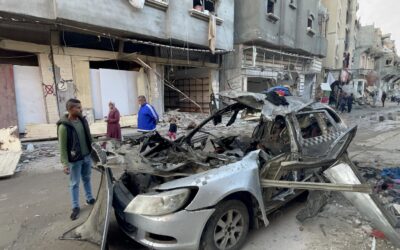
Estonia’s Top Diplomat: Stop Putin Now or Prepare for NATO-Russia War
SUBSCRIBER+EXCLUSIVE INTERVIEW — With a mere 1.2 million citizens, Estonia is among NATO’s smallest members, but its contributions to Ukraine have led the pack by […] More
Bottom Line Up Front
The latest attack by Houthi rebels against Saudi oil and gas infrastructure involved ten drones equipped with improvised explosives. Their target was the massive Shaybah oil field, nearly 1000 kilometers from the Yemeni border. Like other attacks, this latest one failed to cause catastrophic damage, yet demonstrated the Houthis’ increased capability since the conflict began in March 2015. By nearly every measure, the war in Yemen has been a failure. When initially launched by the Saudi-led coalition, the primary goals were to restore the toppled government of Abdrabbuh Mansur Hadi; defeat the threat posed by Houthi rebels, and roll back Iranian influence in the country. The Saudis have achieved none of these goals, and Iran’s involvement in the conflict, specifically through training and assistance to the Houthis, has actually expanded.
The anti-Houthi coalition has been relatively ad hoc; led by Saudi Arabia and, to a lesser extent, the United Arab Emirates (UAE), it has recently fractured, and proxies have turned on one another. The UAE has been supporting the Southern Transitional Council (STC), a faction that has no interest in restoring the Hadi government. The STC’s ultimate goal is to secede and create a new country in southern Yemen. On August 10, STC forces, with UAE military equipment and funding, took over and occupied Yemeni government buildings and offices in Aden. The STC has begun withdrawing from some of the positions it seized while holding onto several small military bases. On August 20, the STC and Saudi-led forces fought again, with the STC seizing two military bases in the city of Zinjibar, east of Aden. Saudi officials have denounced the latest ‘unjustified escalation’ by the ‘separatists,’ but the infighting continues.
The latest Houthi drone strikes led to retaliatory airstrikes by Saudi Arabia in the capital of Sanaa on August 19. Airstrikes have been a leading cause of civilian casualtiessince 2015. The Houthis have no air force, leaving coalition aircraft with uncontested air dominance. The U.S. is providing intelligence support to mitigate collateral damage, according to the Trump administration, but errant strikes on schools, hospitals, and public infrastructure continue to injure and kill civilians.
U.S. support for coalition action in Yemen is predicated upon its stated goal of containing Iran. Yet, the war in Yemen has actually increased Iran’s influence in the country and on the Houthis. With no clear victory in sight, the UAE has pulled out most of its troops, though it continues to provide support to the STC, much to the dismay of Riyadh. U.N. efforts to bring about a cease-fire have stalled entirely, in no small part because the U.S. refuses to pressure the Saudis to change course, despite bipartisan clamor to end support to the coalition.
Related Articles

SUBSCRIBER+EXCLUSIVE INTERVIEW — With a mere 1.2 million citizens, Estonia is among NATO’s smallest members, but its contributions to Ukraine have led the pack by […] More

SUBSCRIBER+EXCLUSIVE BRIEFING — Drone weapons are part of the daily narrative of the war in Ukraine – from Russia’s use of Iranian drones against infrastructure […] More

SUBSCRIBER+ EXCLUSIVE ANALYSIS — Iran’s retaliatory strikes against Israel this weekend were both a potentially game-changing, historic first — and an underwhelming response. Historic, because […] More

SUBSCRIBER+EXCLUSIVE INTERVIEW — Ukraine was hit by a fresh round of Russian missile attacks on Thursday, strikes that targeted and damaged the country’s power grid […] More

SUBSCRIBER+ EXCLUSIVE REPORTING — The Israeli drone strike that killed three adult sons (who Israel says were Hamas operatives) and four grandchildren of Hamas’s Qatar-based […] More

BOTTOM LINE UP FRONT – In the spring of 2022, Ukraine beat back a Russian assault on the nation’s capital and punished the invaders on […] More
Search